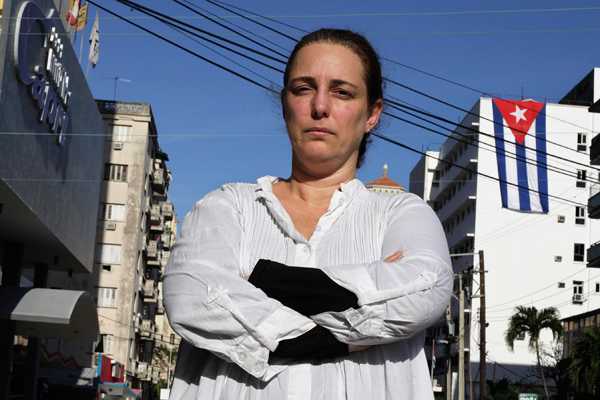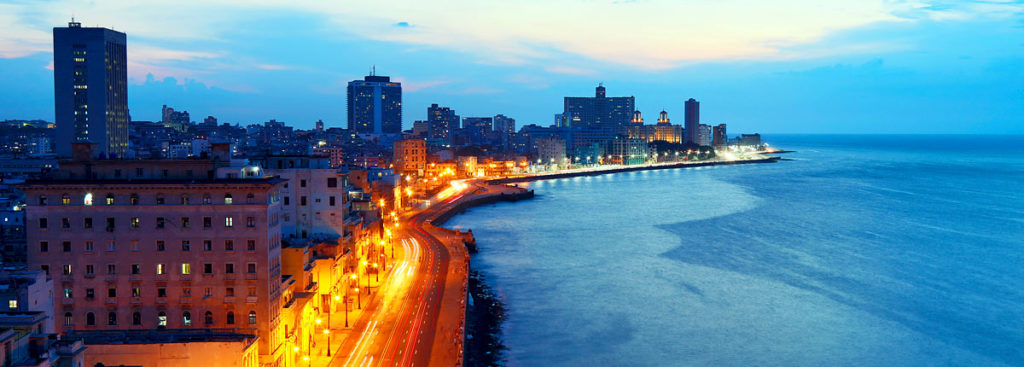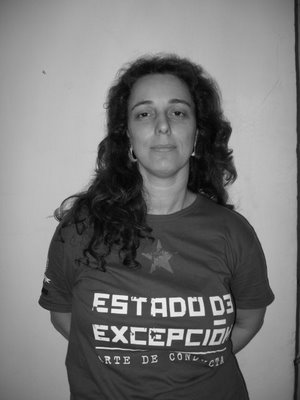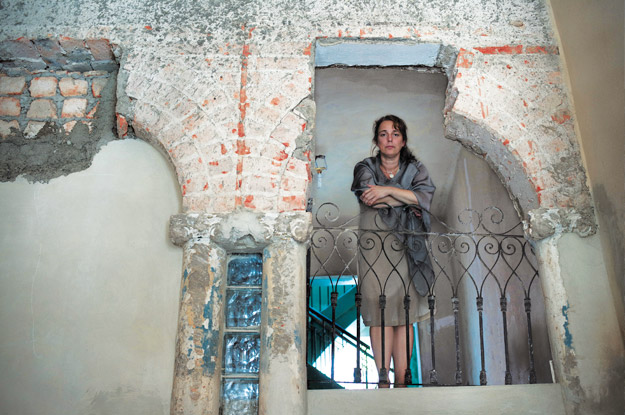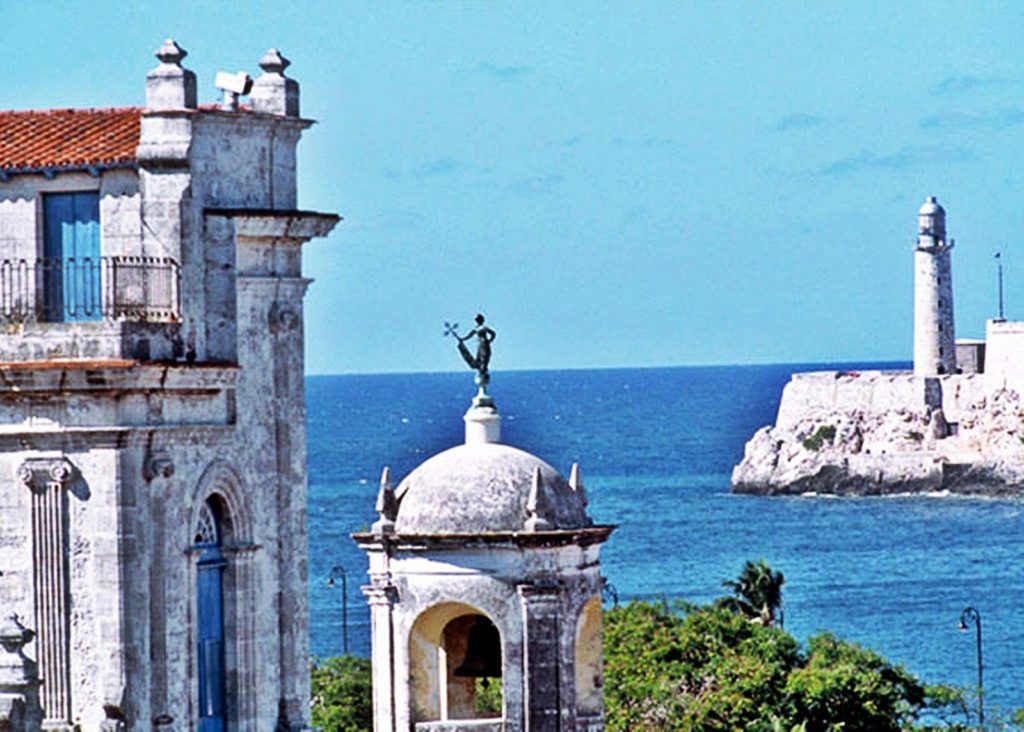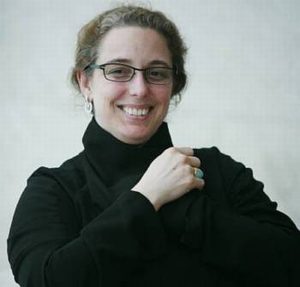 TANIA BRUGUERA, PERFORMANCE ARTIST, A CUBAN POLITICAL REBEL, MARXIST ACTIVIST.
TANIA BRUGUERA, PERFORMANCE ARTIST, A CUBAN POLITICAL REBEL, MARXIST ACTIVIST.
Tania Bruguera (born 1968) is a Cuban installation and performance artist. She lives and works between New York and Havana, and has participated in numerous international exhibitions. Her work is also in the permanent collections of many institutions, including the Museum of Modern Art and Bronx Museum of the Arts and the Museo Nacional de Bellas Artes de La Habana.
Bruguera’s work pivots around issues of power and control, and several of her works interrogate and re-present events in Cuban history. As part of the work, Bruguera has launched an Immigrant Respect Awareness Campaign and launched an international day of actions on 18 December 2011 (which the UN has designated International Migrants Day), in which other artists will also make work about immigration.
She was born Tania Brugueras, the daughter of diplomat and politician Miguel Brugueras, but aged 18 changed her name to Bruguera, “her first act of political rebellion”.
With her father being a diplomat and minister in the Fidel Castro government, Tania moved three times throughout her childhood. Her father’s career took the family to Paris (1973–1974), Lebanon (1974–1977), and Panama (1977–1979). In 1979, two years after her third move, Bruguera decided to return to Cuba.
Bruguera studied at the Instituto Superior de Arte in Havana and then earned an M.F.A. in performance from the School of the Art Institute of Chicago. She is the founder and director of Catédra Arte de Conducta (behavior art school), the first performance studies program in Latin America, which is hosted by Instituto Superior de Arte in Havana.
From 2003 through 2010, she was an assistant professor at the Department of Visual Arts of the University of Chicago, United States and is an invited professor at the Università Iuav di Venezia in Venice, Italy. On January 2, 2015, she was released after having three back-to-back detentions within the time frame of three days, after having over a thousand artists worldwide signing an open letter to Raúl Castro calling for her release.
Controversy
Bruguera’s connections with the Cuban political nomenclature through her father have been said to be the reason why she, as a Marxist Cuban, could develop an international career with ease; in a way this is no true opponent the Cuban government could ever realize.
Work
Tania Bruguera’s 1997 work The Burden of Guilt (El peso de la culpa) was the artist’s take on a story that indigenous people in Cuba vowed to eat dirt and nothing else rather than be the captives of the Spanish conquistadors. Bruguera interpreted their act of eating dirt as “a weapon of resistance.” In her performance, Bruguera stood, naked, with a lamb carcass hanging from her neck, creating both a physical and symbolic burden. For 45 minutes, she consumed soil mixed with water and salt, representing tears. As Edward Rubin described it, “the harrowing piece was first performed in Havana, where the audience was duly reminded that freedom, liberty, and self-determination are not abstract ideals, but achievements that deeply inscribe their meaning on our physical being.”
In 1998–9 Tania created a behavior art piece titled “Desierro,” which translates into ‘displacement’ in English. This piece of work resembles the power figure ‘Nikis Nkonde’ and is supposed to draw attention to the empty promises the Cuban government made to its people during the revolution. With this piece of art Tania calls upon the Cuban people to take an active stance and demands from the Cuban government to finally fulfill their promises.
In 2002 Tania Bruguera founded the Cátedra Arte de Conducta (Behavior Art School) in Havana to provide a space for the training of alternative art studies in contemporary Cuban society. The focus of the Cátedra was to educate Cubans on diverse styles of art, and to show how art could be used as a tool for the transformation of ideology.
A March 2009 performance by Tania Bruguera at an arts centre in Havana has been involved in controversy. During the performance Bruguera put up a microphone and told people in attendance they could say whatever they wanted for one minute. Various of the attendees use the opportunity to ask for “freedom” and “democracy”. One of these was the awarded blogger Yoani Sánchez. The Cuban government denounced this in a statement saying that it considered “this to be an anti-cultural event of shameful opportunism that offends Cuban artists and foreigners who came to offer their work and solidarity.”
In 2011, Bruguera began working on Immigrant Movement International, a multi-part artwork expected to continue through 2015. Bruguera began in 2011 by spending a year living in a small apartment in Corona, Queens, with five immigrants and their children. She was interested in experiencing some problems immigrants without residency papers encountered trying to survive on low pay and without health insurance. The project, funded by the Queens Museum of Art and a nonprofit arts group called Creative Time, also involved opening a storefront in New York where Bruguera wanted to hold arts workshops for immigrants, but found that most of the people who came to the store were interested in learning English or help finding employment or legal aid.
In 2012, she presented Surplus Value, a participatory work as part of the larger project of Immigrant Movement International. In order to enter Surplus Value, museum visitors waited in a long line, and some were randomly allowed to enter, while others were submitted to lie detector tests asking about their travel history. The exhibition space contained four reproductions of signs from Nazi labor camps.
In 2013, she initiated the project The Museum of Arte Útil in collaboration with Queens Museum of Art in New York and the Van Abbemuseum in Eindhoven (NL). Arte Útil in Spanish roughly translates as useful art, but also suggests art as a device or tool. Arte Útil imagines, creates and implements socially beneficial outcomes. The Museum of Arte Útil evolved in the Asociación de Arte Útil, a new, international membership organisation that seeks to promote and implement Arte Útil. Alistair Hudson, director of the Middlesbrough Institute of Modern Art (MIMA) is co-director with Bruguera of the Asociación.
In 2017, Bruguera proposed herself as a candidate in the 2018 Cuban Presidential Election in a video called #YoMePropongo en Cuba. In this project, she challenges the audience to imagine what they would do to create a better future Cuba, if they were elected president. To date, Bruguera has received 70 video responses from everyday Cubans expressing their desires to reform the corrupt government, include affordable housing, and improve their weak economy.
In 2018, she was the recipient of a commission for the Tate Modern’s Turbine Hall.
Bruguera has participated in numerous international exhibitions, including Documenta 11 (2002), the Bienal Iberoamericana in Lima, Peru (2002), the Istanbul Biennial (2003), the Shanghai Biennale (2004), and the Gwangju Biennale in Gwangju, Korea (2008). Her work is also in the permanent collections of many institutions around the world, including the Museum of Modern Art and Bronx Museum of the Arts in New York and the Museo Nacional de Bellas Artes de La Habana.
Activism
Bruguera was arrested and released three times in the time frame of December 2014 through January 2015 for having organized a public performance in La Havana’s Plaza de la Revolución. She was detained with several other Cuban artists, activists, bloggers and journalists who participated in the ‘Yo Tambien Exijo’ campaign. The campaign arose after Raúl Castro and Barack Obama’s declarations on December 17th, 2014 about the restoration of diplomatic ties, potentially bringing an end to five decades of hostility. The first arrests were made on Tuesday, December 30th, after Bruguera announced a public performance with the intention of leaving an open microphone available to Cubans to allow them to freely express their thoughts. The performance, titled Tatlin’s wisper #6 – Havana Version, was already staged in 2009 during the 10th Havana Biennial.
The event has attracted widespread media coverage both in favor and against her action and a public letter in support of Tania addressed to Raúl Castro was written and signed by over a thousand people across the globe. The letter stated: ‘We firmly believe her detention, and the withdrawal of her Cuban passport, are inappropriate responses to a work of art that simply sought to open space for public discussion.’ Eventually she was released and the Cuban government returned Tania Bruguera’s passport on 10 July 2015, six months after confiscating it.
In December 2015, Bruguera announced that she may still return to Cuba. She said that during the time of her detention she only agreed to leave under two conditions: that dissidents who were arrested after attending her aborted performance in Revolution Square be released; and that the Cuban government give her a signed and stamped letter guaranteeing that she could return to Cuba.
On March 3, 2016 she launched a Kickstarter campaign to raise funds for INSTAR (Institute of Artivism Hannah Arendt). The Institute focuses on creating bridges of trust, peaceful and considered responses in times of hardship, and to create a place where people with different political views can come together to build a better country.
In October 2017, Tania Bruguera announced that she would be running for “President of Cuba”, when the current President Raul Castro (brother of Fidel Castro) steps down. Bruguera has stated that the satirical performance is an act to expose the fact of Cuba being a one party state that is not elected by the people. She is hoping to enact change with bringing to light this reality, removing the culture of fear.
Last Exhibitions.
2018 Untitled (Havana 2000) The Museum of Modern Art, New York, United States Solo
2004 Dated Flesh Rhona Hoffman Gallery, Chicago, United States Solo
2004 Art Projects Art Basel, Miami, United States Group
2004 Shangai Bienale Shangai, China Group
2004 Island Nations Rhode Island School of Design Museum, Rhode Island, United States Group
2003 Esercizio di resistenza Franco Soffiantino Gallery, Turin, Italy Solo
2003 Autobiografia Museo Nacional de Bellas Artes, Havana, Cuba Solo
2003 The Royal, royal trip PS1, New York, New York Group
2003 Untitled Palacio del Patio Herreriano, Valladollid, Spain Group
2003 Poetic Justice 8th Istanbul Bienale, Istanbul, Turkey Group
2003 The living museum Museum fur Modern Kunst, Frankfurt, Germany Group
2002 Ingeniero de almas Palacio de Abrantes, Salamanca, Spain Solo
2002 Tania Bruguera – Ghada Amer San Francisco Art Institute, San Francisco, California, United States Solo
2002 Fusion Cuisine Deste Foundation, Athens, Greece Group
2002 Extreme Existence Pratt Institute. New York Group
2002 Documenta 11 Kassel, Germany Group
2002 The Stone and water Helsinki Art Museum, Helsinki, Finland Group
2002 No place IFA Gallery, Bonn, Germany Group
2002 III Bienal de Lima Lima, Peru Group
2002 Untitled F.A.I.R The Royal College, London Group
Last Awards
2018: Inga Maren Otto Fellowship. The Watermill Center. Long Island, New York, United States.[43]
2013: Meadows Prize. Meadows School of Art and The Meadows Foundation. Texas, United States.
2012: Honorary Committee. 40 Years of Latino Arts & Culture. El Museo del Barrio. New York, United States.
2012: Derek Williams Trust Purchase Award. Amgueddfa Cymru — National Museum Wales, Contemporary Art Collection. Wales, United Kingdom.
2012: Artes Mundi Finalist. National Museum of Art. Wales, United Kingdom.
2011: Mid-Career Artist CIFO Grant. Cisneros Fontanals Art Foundation. Florida, United States.
2011: Best Show in a University Gallery in 2010: “Tania Bruguera: On the Political Imaginary.” AICA Awards. New York, United States.
2011: The Bronx Museum of the Art’s recognition. The Bronx Museum of the Arts. New York, United States.
2010: Biennial Competition Award. The Louis Comfort Tiffany Foundation. New York, United States.
2009: Ordway Prize Finalist. Creative Link for the Arts / The New Museum. New York, United States. 1st Neuberger Prize. Neuberger Museum. New York, United States.
2008: Prince Claus Award. Prince Claus Fund. Rotterdam, The Netherlands.
2007: European Commission for Decentralized Cooperation. European Union.
2005: Fundación Amistad Travel Grant Support. Fundación Amistad. New York, United States.
2002–2004: Cuban Arts Fund Grant. Cuban Arts Fund. New York, United States.
Website http://www.taniabruguera.com
SPONSORS
 TANIA BRUGUERA, ARTISTA DE ACTUACIÓN, REBELDE POLÍTICA, ACTIVISTA MARXISTA CUBANA.
TANIA BRUGUERA, ARTISTA DE ACTUACIÓN, REBELDE POLÍTICA, ACTIVISTA MARXISTA CUBANA.
Tania Bruguera (nacida en 1968) es una artista cubana de actuación y ejecución. Ella vive y trabaja entre Nueva York y La Habana, y ha participado en numerosas exposiciones internacionales. Su trabajo también se encuentra en las colecciones permanentes de muchas instituciones, incluyendo el Museo de Arte Moderno y el Museo de las Artes del Bronx y el Museo Nacional de Bellas Artes de La Habana.
El trabajo de Bruguera gira en torno a cuestiones de poder y control, y varias de sus obras interrogan y vuelven a presentar eventos en la historia de Cuba. Como parte del trabajo, Bruguera lanzó una Campaña de Conciencia del Respeto a los Inmigrantes y lanzó un día internacional de acciones el 18 de diciembre de 2011 (que la ONU ha designado el Día Internacional del Migrante), en el que otros artistas también harán trabajos sobre inmigración.
Nació Tania Brugueras, hija del diplomático y político Miguel Brugueras, pero a los 18 años cambió su nombre a Bruguera, “su primer acto de rebelión política”.
Con su padre como diplomático y ministro en el gobierno de Fidel Castro, Tania se mudó tres veces durante su infancia. La carrera de su padre llevó a la familia a París (1973-1974), Líbano (1974-1977) y Panamá (1977-1979). En 1979, dos años después de su tercer movimiento, Bruguera decidió regresar a Cuba.
Bruguera estudió en el Instituto Superior de Arte en La Habana y luego obtuvo un M.F.A. en la actuación de la Escuela del Instituto de Arte de Chicago. Es la fundadora y directora de Catédra Arte de Conducta (escuela de arte del comportamiento), el primer programa de estudios de performance en América Latina, organizado por el Instituto Superior de Arte en La Habana.
De 2003 a 2010, fue profesora asistente en el Departamento de Artes Visuales de la Universidad de Chicago, Estados Unidos, y es profesora invitada en la Universidad Iváv de Venecia, en Venecia, Italia. El 2 de enero de 2015, fue liberada después de tres detenciones consecutivas en el plazo de tres días, luego de que más de mil artistas de todo el mundo firmaran una carta abierta a Raúl Castro solicitando su liberación.
CONTROVERSIA
Se dice que las conexiones de Bruguera con la nomenclatura política cubana a través de su padre son la razón por la que ella, como marxista cubana, podría desarrollar una carrera internacional con facilidad; en cierto modo, este no es un verdadero adversario que el gobierno cubano pueda realizar alguna vez.
TRABAJO
La obra de Tania Bruguera, El peso de la culpa, de 1997, fue la versión del artista de la historia de que los indígenas en Cuba prometieron comer tierra y nada más que ser los cautivos de los conquistadores españoles. Bruguera interpretó su acto de comer tierra como “un arma de resistencia”. En su actuación, Bruguera estaba de pie, desnuda, con un cadáver de cordero colgando de su cuello, creando una carga física y simbólica. Durante 45 minutos, ella consumió tierra mezclada con agua y sal, representando lágrimas. Como lo describió Edward Rubin, “la desgarradora pieza se presentó por primera vez en La Habana, donde se recordó a la audiencia que la libertad, la libertad y la autodeterminación no son ideales abstractos, sino logros que inscriben profundamente su significado en nuestro ser físico”.
En 1998-9 Tania creó una pieza de arte de comportamiento titulada “Desierro”, que se traduce como “desplazamiento” en inglés. Este trabajo se asemeja a la figura de poder ‘Nikis Nkonde’ y se supone que llama la atención sobre las promesas vacías que el gobierno cubano hizo a su pueblo durante la revolución. Con esta obra de arte, Tania hace un llamamiento al pueblo cubano para que adopte una postura activa y exija al gobierno cubano cumplir sus promesas.
En 2002 Tania Bruguera fundó la Cátedra Arte de Conducta (Escuela de Arte del Comportamiento) en La Habana para proporcionar un espacio para la formación de estudios de arte alternativo en la sociedad cubana contemporánea. El objetivo de la Cátedra era educar a los cubanos sobre diversos estilos de arte y mostrar cómo el arte podía ser utilizado como una herramienta para la transformación de la ideología.
Una presentación de marzo de 2009 de Tania Bruguera en un centro de arte en La Habana ha estado envuelta en controversia. Durante la presentación, Bruguera colocó un micrófono y le dijo a la gente que asistía que podían decir lo que quisieran por un minuto. Varios de los asistentes aprovechan la oportunidad para pedir “libertad” y “democracia”. Una de ellas fue la premiada bloguera Yoani Sánchez. El gobierno cubano denunció esto en un comunicado diciendo que consideraba que “se trata de un evento anti-cultural de oportunismo vergonzoso que ofende a artistas cubanos y extranjeros que vinieron a ofrecer su trabajo y solidaridad”.
En 2011, Bruguera comenzó a trabajar en Immigrant Movement International, una obra de arte de varias partes que se espera continúe hasta 2015. Bruguera comenzó en 2011 pasando un año viviendo en un pequeño apartamento en Corona, Queens, con cinco inmigrantes y sus hijos. Estaba interesada en experimentar algunos problemas con los inmigrantes sin documentos de residencia que se encontraron tratando de sobrevivir con bajos salarios y sin seguro de salud. El proyecto, financiado por el Queens Museum of Art y un grupo artístico sin fines de lucro llamado Creative Time, también implicó la apertura de una tienda en Nueva York donde Bruguera quería realizar talleres de arte para inmigrantes, pero descubrió que la mayoría de las personas que acudían a la tienda interesado en aprender inglés o ayudar a encontrar empleo o asistencia legal.
En 2012, presentó Surplus Value, un trabajo participativo como parte del proyecto más grande de Immigrant Movement International. Para ingresar el valor excedente, los visitantes del museo esperaron en una fila larga, y algunos fueron autorizados a ingresar al azar, mientras que otros fueron sometidos a pruebas de detectores de mentiras que preguntaban sobre su historial de viajes. El espacio de exhibición contenía cuatro reproducciones de signos de los campos de trabajo nazi.
En 2013, inició el proyecto El Museo de Arte Útil en colaboración con el Museo de Arte de Queens en Nueva York y el Van Abbemuseum en Eindhoven (NL). Arte Útil en español se puede traducir como arte útil, pero también sugiere el arte como un dispositivo o herramienta. Arte Útil imagina, crea e implementa resultados socialmente beneficiosos. El Museo de Arte Útil evolucionó en la Asociación de Arte Útil, una nueva organización de membresía internacional que busca promover e implementar Arte Útil. Alistair Hudson, director del Instituto de Arte Moderno de Middlesbrough (MIMA) es codirector de Bruguera de la Asociación.
En 2017, Bruguera se propuso como candidata en las elecciones presidenciales cubanas de 2018 en un video llamado #YoMePropongo en Cuba. En este proyecto, desafía a la audiencia a imaginar qué harían para crear un futuro mejor Cuba, si fueran elegidos presidente. Hasta la fecha, Bruguera ha recibido 70 respuestas en video de cubanos que expresan sus deseos de reformar el gobierno corrupto, incluir viviendas asequibles y mejorar su débil economía.
En 2018, recibió una comisión para el Turbine Hall de Tate Modern.
Bruguera ha participado en numerosas exposiciones internacionales, incluida Documenta 11 (2002), la Bienal Iberoamericana en Lima, Perú (2002), la Bienal de Estambul (2003), la Bienal de Shanghai (2004) y la Bienal de Gwangju en Gwangju, Corea (2008 ) Su trabajo también se encuentra en las colecciones permanentes de muchas instituciones de todo el mundo, incluido el Museo de Arte Moderno y el Museo de Arte del Bronx en Nueva York y el Museo Nacional de Bellas Artes de La Habana.
ACTIVISMO
Bruguera fue arrestado y liberado tres veces en el período de diciembre de 2014 hasta enero de 2015 por haber organizado una presentación pública en la Plaza de la Revolución de La Habana. Fue detenida junto con otros artistas, activistas, blogueros y periodistas cubanos que participaron en la campaña ‘Yo Tambien Exijo’. La campaña surgió después de las declaraciones de Raúl Castro y Barack Obama el 17 de diciembre de 2014 sobre la restauración de las relaciones diplomáticas, lo que podría poner fin a cinco décadas de hostilidad. Los primeros arrestos se realizaron el martes 30 de diciembre, luego de que Bruguera anunciara una presentación pública con la intención de dejar un micrófono abierto a disposición de los cubanos para permitirles expresar libremente sus pensamientos. La actuación, titulada “Wispin # 6 de Tatlin” – Versión de La Habana, ya se realizó en 2009 durante la 10ª Bienal de La Habana.
El evento ha atraído una amplia cobertura mediática tanto a favor como en contra de su acción y una carta pública en apoyo de Tania dirigida a Raúl Castro fue escrita y firmada por más de mil personas en todo el mundo. La carta decía: “Creemos firmemente que su detención y la retirada de su pasaporte cubano son respuestas inapropiadas a una obra de arte que simplemente buscaba abrir el espacio para la discusión pública.” Finalmente fue liberada y el gobierno cubano devolvió el pasaporte de Tania Bruguera el 10 de julio de 2015, seis meses después de confiscarlo.
En diciembre de 2015, Bruguera anunció que aún puede regresar a Cuba. Dijo que durante el tiempo de su detención solo accedió a partir bajo dos condiciones: liberar a los disidentes que fueron arrestados después de asistir a su actuación abortada en la Plaza de la Revolución; y que el gobierno cubano le entregue una carta firmada y sellada que garantiza que puede regresar a Cuba.
El 3 de marzo de 2016 lanzó una campaña de Kickstarter para recaudar fondos para INSTAR (Instituto de Artivismo Hannah Arendt). El Instituto se enfoca en crear puentes de confianza, respuestas pacíficas y consideradas en tiempos difíciles, y crear un lugar donde personas con diferentes puntos de vista políticos puedan unirse para construir un país mejor.
En octubre de 2017, Tania Bruguera anunció que se postularía para el “Presidente de Cuba”, cuando el actual presidente Raúl Castro (hermano de Fidel Castro) renuncie. Bruguera ha declarado que la actuación satírica es un acto para exponer el hecho de que Cuba es un estado de partido único que no es elegido por el pueblo. Ella espera representar el cambio con sacar a la luz esta realidad, eliminando la cultura del miedo.
(LEER ÚLTIMAS EXHIBICIONES Y PREMIOS DE TANIA BRUGUERA EN LA SECCIÓN EN INGLÉS).
Agencies/Wikipedia/Various/Internet Photos/ Arnoldo Varona/ TheCubanHistory.com
THE CUBAN HISTORY, HOLLYWOOD.
SPONSORS



